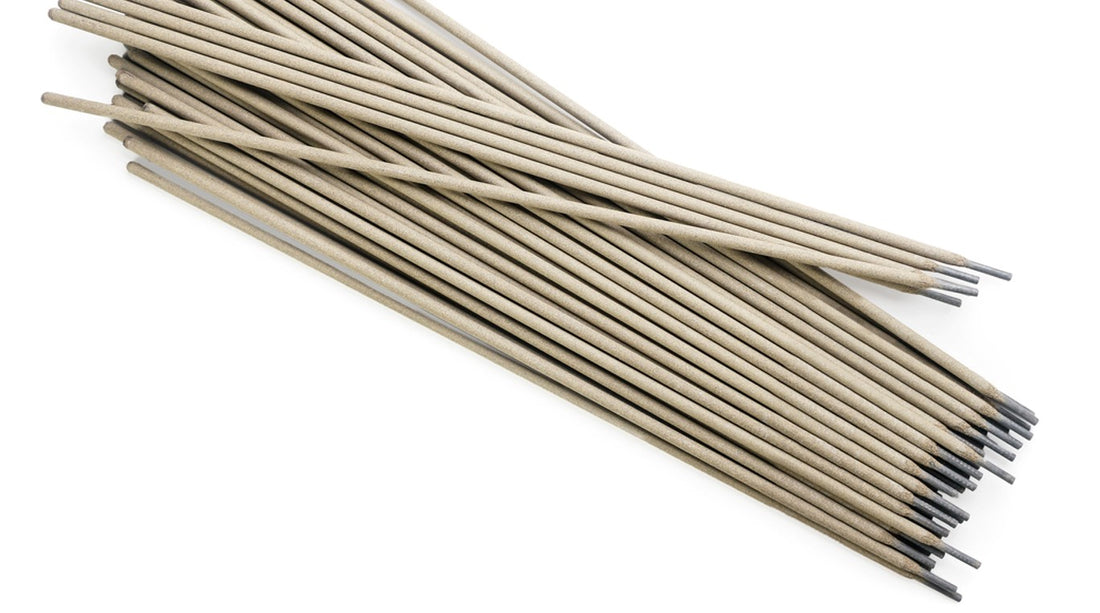Without welding rods, many different welding processes wouldn’t be possible. Electrical arcs melt down these filler materials during certain processes to form the welds that so many of us rely upon for our businesses and construction projects to flourish.
However, it can be challenging for those new to welding to understand what kind of rods we should use. And even once we know what type we need, differentiating them from one another can be an even bigger challenge.
Today, we’re focusing on one specific welding rod so that you can understand how it is used and how to best incorporate it into your life. The e6013 welding rod is a specific welding rod that can be used in all sorts of ways, but it requires its users to understand how it’s meant to be utilized.
Let’s get into what kind of processes you would use an e6013 welding rod, where it shines, what you wouldn’t want to use it for, and how to ensure you’re welding with it correctly.
How Welding Rods Are Used
As you likely know, welding requires the heating up and melting down of filler metals to form a weld. There are a few different welding processes out there: shielded metal arc welding, MIG welding, and TIG welding, to name a few. Still, just about all of them necessitate the melting down of filler metals to form a strong bond that sturdily pairs two formerly separated pieces of metal.
We know this is probably elementary for most of you, but we wanted to break down the basics for the beginners joining us. This filler metal can vary in size, shape, material, and appearance. Some welding processes rely on a roll of wire to feed filler metal to be melted down.
Some require welding rods coated in flux to form a protective atmosphere around the welding site. Many welding processes will adapt to the weld metal being used. For example, if you’re working with aluminum, then you might need to use different welding rods than if you were working with carbon steel, stainless steel, copper, or cast iron.

A Breakdown of the 6013 Welding Rod
The 6013 welding rod is made of mild steel. It comes with a high titanium potassium coating and a tensile strength of 60,000 PSI. This means it is a pretty strong little number, and despite its thin size, you can use it in various welding situations.
Because of its clean and simple nature, the 6013 can deliver a highly stable arc that makes it perfect for beginners. The more stable the arc, the steadier the weld will be, meaning that true pros can use the 6013 welding rod to end up with a weld that is smooth to the finish and as strong as it needs to be.
The 6013 is most often utilized on welds for sheet metal because you can easily apply it to thin surfaces. However, it isn’t necessarily the most delicate welding rod on the market.
While you can do clean work with it, it isn’t as thin as some of the wires out there, meaning if you’re truly going for delicate work, we might recommend different welding rods. It’s certainly a lot slimmer than other options, such as the 6011, but you won’t want to rely on it for the finest work.
Where Is the 6013 Welding Rod Most Often Used?
What are 6013 welding rods used for? These rods are most commonly used for sheet metal as they have only shallow penetration.
Because it is possible to do fine work with the 6013 welding rod, you’ll often see it used in trades that deal with clean aesthetics, such as auto body work, furniture making, and other mid-sized projects.
It’s possible to do clean welds on small joints or bodywork for vehicles of all kinds – think motorcycles, custom cars, and more. When it comes to furniture, it’s more of the same. Any metal chairs, benches, or tables can be fine-tuned, adjusted, and strengthened using the 6013 welding rod.

When Shouldn’t You Use a 6013 Welding Rod?
We recommend ditching the 6013 welding rod if you’re trying to do any serious structural welding work because these rods can not only buckle under pressure but also produce quite a lot of slag when used at more relaxed angles. This means more trouble if you’re trying to come up with a seriously reliable bit of structure.
You’d be better off using a thicker welding rod instead – again, the 6013 is for more delicate, aesthetic work. You wouldn’t want to use it to build your house. If you’re curious about all of the ways to categorize rods that are out there on the market, have no fear. We would encourage you to check out our comprehensive guide on how welding rod sizes work.
Understanding the Limitations of the 6013 Welding Rod
We hope this article gives you a more in-depth understanding of what the 6013 welding rod is capable of. This rod is growing in popularity for its overall versatility and general ease of use. Many beginners have picked it up quickly and incorporated it into their list of readily-available rods.
However, it’s important to remember that in welding, no magical tools fit every situation. You’re going to need to keep many items, rods, torches, and metals on hand if you want to figure out every welding situation. Either way, we hope you had an enjoyable read and that now you have a better grasp on what this welding rod is capable of!

